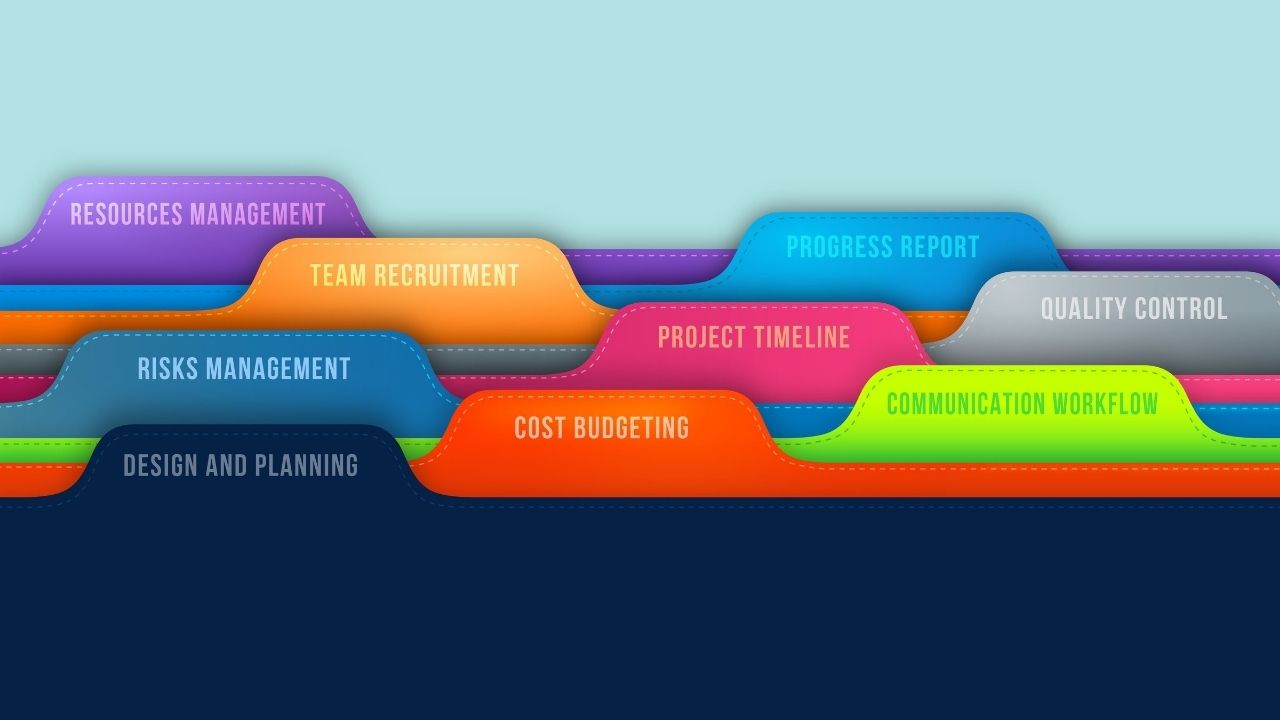Do you find that your web design projects constantly going off track? Do you find yourself struggling to keep the scope from spiraling out of control? Look no further. In this article, we will guide you through effective scope creep management strategies, helping you prevent your web design project from derailing. By understanding early warning signs, setting clear objectives, and implementing change control processes, you can ensure smooth progress and keep your clients satisfied.
Let's dive in and take control of your web design projects!
 Another warning sign is when there are frequent changes to the project requirements or goals. This indicates a lack of clarity and can result in confusion among team members and stakeholders. Additionally, if there is a constant demand for additional resources or budget, it is a clear indication that the scope is expanding beyond its original boundaries.
To combat scope creep, it is crucial to have a clear scope definition and change control process in place. Regular communication and collaboration with the client can also help identify any potential scope creep and address it early on.
Another warning sign is when there are frequent changes to the project requirements or goals. This indicates a lack of clarity and can result in confusion among team members and stakeholders. Additionally, if there is a constant demand for additional resources or budget, it is a clear indication that the scope is expanding beyond its original boundaries.
To combat scope creep, it is crucial to have a clear scope definition and change control process in place. Regular communication and collaboration with the client can also help identify any potential scope creep and address it early on.



 One key aspect of change control processes is stakeholder involvement. It's important to engage stakeholders throughout the project to understand their needs and expectations. By involving them in the decision-making process, you can ensure that any changes are aligned with their requirements and priorities. This not only helps to prevent scope creep but also increases stakeholder satisfaction and buy-in.
To implement effective change control processes, establish clear guidelines and procedures for requesting, evaluating, and approving changes. This includes defining the roles and responsibilities of stakeholders involved in the change control process. Regular communication and collaboration with stakeholders are essential to ensure that everyone is on the same page and any changes are properly documented and assessed for their impact on the project scope.
One key aspect of change control processes is stakeholder involvement. It's important to engage stakeholders throughout the project to understand their needs and expectations. By involving them in the decision-making process, you can ensure that any changes are aligned with their requirements and priorities. This not only helps to prevent scope creep but also increases stakeholder satisfaction and buy-in.
To implement effective change control processes, establish clear guidelines and procedures for requesting, evaluating, and approving changes. This includes defining the roles and responsibilities of stakeholders involved in the change control process. Regular communication and collaboration with stakeholders are essential to ensure that everyone is on the same page and any changes are properly documented and assessed for their impact on the project scope.


Key Takeaways
- Scope creep occurs when project requirements expand beyond initial scope and can cause delays, increased costs, and disrupted workflow.
- Early warning signs of scope creep include new features added without planning, frequent changes to project requirements, and constant demand for additional resources.
- Strategies to manage scope creep include setting clear project goals, effective communication, and managing client expectations.
- Project management tools like Gantt charts and Agile methodology can help track scope and progress, and taking corrective action can prevent scope creep.
Understanding Scope Creep in Web Design Projects
Understanding scope creep in web design projects can help prevent the project from spiraling out of control. When you identify the causes of scope creep and understand its impact, you can take proactive measures to manage it effectively. Scope creep occurs when the project requirements and deliverables expand beyond the initial agreed-upon scope. This can happen due to various reasons, such as unclear project goals, inadequate communication between stakeholders, or changing client demands. By identifying these causes, you can address them early on and minimize the chances of scope creep occurring. The impact of scope creep can be detrimental to a web design project. It can lead to delays, increased costs, and frustration among team members. When the scope of the project keeps expanding, it becomes challenging to meet deadlines and stay within budget. Additionally, constant changes in requirements can disrupt the workflow and make it difficult to maintain the quality of the final product. Understanding the causes and impact of scope creep allows you to develop strategies to manage it effectively. By setting clear project goals, establishing effective communication channels, and managing client expectations, you can prevent scope creep from derailing your web design project. Regularly reviewing and revising the project scope can also help in ensuring that the project stays on track and delivers the desired results.Identifying Early Warning Signs of Scope Creep
Be aware of the early warning signs of scope creep to ensure your web design project stays on track. By taking a proactive approach and implementing early intervention, you can prevent scope creep from spiraling out of control. One of the first signs of scope creep is when new features or functionalities are constantly being added to the project without proper planning or evaluation. This can lead to increased workload, delays, and ultimately, a project that exceeds its original scope. Another warning sign is when there are frequent changes to the project requirements or goals. This indicates a lack of clarity and can result in confusion among team members and stakeholders. Additionally, if there is a constant demand for additional resources or budget, it is a clear indication that the scope is expanding beyond its original boundaries.
To combat scope creep, it is crucial to have a clear scope definition and change control process in place. Regular communication and collaboration with the client can also help identify any potential scope creep and address it early on.
Another warning sign is when there are frequent changes to the project requirements or goals. This indicates a lack of clarity and can result in confusion among team members and stakeholders. Additionally, if there is a constant demand for additional resources or budget, it is a clear indication that the scope is expanding beyond its original boundaries.
To combat scope creep, it is crucial to have a clear scope definition and change control process in place. Regular communication and collaboration with the client can also help identify any potential scope creep and address it early on.
Setting Clear Project Objectives and Scope
Setting clear project objectives and defining the scope is essential to keep your web design project on track. By setting realistic timelines and managing stakeholder expectations, you can ensure that your project stays within its intended boundaries and is completed successfully. When starting a web design project, it is important to establish clear objectives. This involves clearly defining what you hope to achieve with the project and what the end result should look like. By setting these objectives from the beginning, you can keep everyone on the same page and avoid any confusion or misunderstandings later on. In addition to setting objectives, it is crucial to define the scope of the project. This means determining the specific features, functionalities, and deliverables that will be included in the final product. By clearly defining the scope, you can prevent scope creep and ensure that the project stays focused and manageable. Setting realistic timelines is another important aspect of keeping the project on track. By considering factors such as the complexity of the project, the resources available, and any potential roadblocks, you can create a timeline that is both achievable and realistic. This will help you manage expectations and avoid delays or frustrations. Managing stakeholder expectations is also essential in keeping the project on track. By regularly communicating with stakeholders and keeping them informed about the progress of the project, you can ensure that everyone is aligned and on board with the objectives and scope. This will help to prevent any misunderstandings or disagreements that could derail the project.
Establishing Effective Communication Channels With Clients
When it comes to establishing effective communication channels with clients, two key points to consider are implementing a client feedback framework and setting clear project expectations. A client feedback framework allows you to gather valuable input from clients throughout the project, ensuring their needs and preferences are met. Additionally, by clearly communicating project expectations from the start, you can avoid misunderstandings and ensure everyone is on the same page, leading to a smoother and more successful project outcome.Client Feedback Framework
You need to establish a clear client feedback framework to ensure effective communication and prevent scope creep in your web design project. Client feedback is crucial for understanding their needs and expectations. By implementing a feedback analysis process, you can gather valuable insights and make informed decisions. Start by creating a designated channel for clients to provide feedback, such as a feedback form or email. Encourage clients to be specific and detailed in their feedback, so you can address their concerns effectively. Regularly review and analyze the feedback received to identify patterns and common issues. This will help you identify potential scope creep and address it promptly.Clear Project Expectations
To ensure a successful outcome, it's important for you to establish clear expectations for your project right from the start. One of the key aspects of establishing these expectations is to have a clear project timeline in place. By setting specific deadlines and milestones, you can effectively manage the progress of your web design project and ensure that it stays on track. Additionally, managing client feedback is crucial in maintaining clear expectations. By establishing a framework for gathering and incorporating client feedback, you can avoid scope creep and keep the project focused on its original goals. Regular communication and collaboration with your clients will help you address any concerns or changes in a timely manner, ensuring that everyone is on the same page throughout the project.
Using Project Management Tools to Track Scope and Progress
Start by using project management tools to track the scope and progress of your web design project. These tools will help you stay organized and ensure that you are on track with your project goals. One useful tool is Gantt charts, which allow you to visually map out the timeline of your project and track the progress of each task. By using Gantt charts, you can easily see if any tasks are falling behind schedule and take corrective action to keep the project on track. Another important aspect of scope management is utilizing Agile methodology. This approach focuses on flexibility and adaptability, allowing you to respond to changes and updates throughout the project. With Agile methodology, you can break down the project into smaller, manageable tasks called sprints, and continuously evaluate and reassess the scope as you go along. This iterative approach ensures that you are delivering value to your clients and meeting their evolving needs. Incorporating project management tools and Agile methodology into your web design project will help you effectively track the scope and progress, and prevent scope creep. By staying organized and adapting to changes, you can successfully complete your project within the defined scope and deliver a high-quality website to your clients.Conducting Regular Project Reviews and Scope Assessments
Regular project reviews and scope assessments help ensure that the project is progressing smoothly and staying within its defined boundaries. By conducting regular project evaluations, you can assess the progress of your web design project and identify any potential risks that may arise. These evaluations allow you to gather feedback from key stakeholders and make necessary adjustments to keep the project on track. During a project evaluation, it is important to assess the scope of the project and compare it to the initial objectives and requirements. This will help you identify any scope creep and take proactive measures to address it. By regularly reviewing the project's scope, you can ensure that it remains aligned with the client's expectations and that any changes are properly documented and approved. Risk assessment is another crucial aspect of project evaluation. By identifying and assessing potential risks, you can develop contingency plans to mitigate their impact on the project. This involves anticipating challenges, evaluating their likelihood and impact, and developing strategies to minimize or eliminate them.Managing Client Expectations and Requests
When managing client expectations and requests, it's crucial to set clear boundaries from the start. This helps establish the scope of the project and ensures that both parties are on the same page. Regular communication and updates are also essential in keeping the client informed and involved throughout the process, allowing for timely feedback and adjustments to be made.
Setting Clear Boundaries
One way to prevent web design project scope from spiraling out of control is by setting clear boundaries. As a web designer, it is crucial for you to establish project boundaries right from the start. By clearly defining what is included in the project and what is not, you can avoid scope creep and ensure that the project stays on track. This can be achieved through clear communication with your clients. Make sure to discuss and document the project goals, objectives, and deliverables. Set realistic expectations and timelines with your clients, and clearly communicate any limitations or constraints that may affect the project scope.Regular Communication and Updates
To effectively stay on top of your web design project, make sure to regularly communicate and provide updates to your clients. Regular progress reports and effective client communication are crucial for keeping everyone involved informed and on the same page. By consistently sharing updates, you can ensure that your clients are aware of the project's progress, any potential challenges, and any changes in scope or timeline. This proactive approach helps build trust and transparency, as your clients feel involved and confident in the project's direction. Regular communication also allows for timely feedback and adjustments, minimizing the risk of misunderstandings or scope creep. Whether it's through email, phone calls, or video conferences, make it a priority to maintain open lines of communication with your clients throughout the web design process.Implementing Change Control Processes
Make sure you're implementing change control processes to effectively manage and prevent scope creep in your web design project. Change control processes are crucial for maintaining control over the project scope and ensuring that it doesn't spiral out of control. By having a structured approach to managing changes, you can minimize the risk of scope creep and keep the project on track. One key aspect of change control processes is stakeholder involvement. It's important to engage stakeholders throughout the project to understand their needs and expectations. By involving them in the decision-making process, you can ensure that any changes are aligned with their requirements and priorities. This not only helps to prevent scope creep but also increases stakeholder satisfaction and buy-in.
To implement effective change control processes, establish clear guidelines and procedures for requesting, evaluating, and approving changes. This includes defining the roles and responsibilities of stakeholders involved in the change control process. Regular communication and collaboration with stakeholders are essential to ensure that everyone is on the same page and any changes are properly documented and assessed for their impact on the project scope.
One key aspect of change control processes is stakeholder involvement. It's important to engage stakeholders throughout the project to understand their needs and expectations. By involving them in the decision-making process, you can ensure that any changes are aligned with their requirements and priorities. This not only helps to prevent scope creep but also increases stakeholder satisfaction and buy-in.
To implement effective change control processes, establish clear guidelines and procedures for requesting, evaluating, and approving changes. This includes defining the roles and responsibilities of stakeholders involved in the change control process. Regular communication and collaboration with stakeholders are essential to ensure that everyone is on the same page and any changes are properly documented and assessed for their impact on the project scope.
Dealing With Scope Creep: Strategies and Best Practices
Now that you have implemented change control processes, it's time to focus on dealing with client demands and handling project delays. When it comes to scope creep, it's important to have strategies and best practices in place to ensure that your web design project stays on track. First and foremost, effective communication is key. Regularly check in with your clients to understand their needs and expectations. By maintaining open lines of communication, you can address any potential scope creep issues before they become major problems. When dealing with client demands, it's important to set clear boundaries and manage expectations. Clearly define the scope of the project from the beginning and establish a change request process. This will help you manage any additional requests that may arise throughout the project. Project delays can also contribute to scope creep. It's important to have a plan in place for handling delays and managing client expectations. Keep clients informed about any potential delays and work with them to find solutions that keep the project moving forward.Frequently Asked Questions
How Can Scope Creep Affect the Overall Success of a Web Design Project?
Scope creep can have negative consequences on the overall success of your web design project. It can lead to increased costs, delays, and a loss of focus. Conducting an impact assessment can help prevent these issues.
What Are Some Common Red Flags or Early Warning Signs of Scope Creep?
Early detection of scope creep is crucial to prevent your web design project from spiraling out of control. By implementing effective communication strategies, you can identify common red flags and warning signs before they become major issues.How Can Setting Clear Project Objectives and Scope Help in Preventing Scope Creep?
Setting clear project objectives and scope helps prevent scope creep by providing a solid framework for the project. It allows you to stay focused, prioritize tasks, and avoid unnecessary changes that can lead to project delays and increased costs.What Are Some Effective Communication Channels That Can Be Established With Clients to Avoid Scope Creep?
To avoid scope creep, establish effective client communication channels. Regularly update clients on project progress, discuss any changes or additions to the scope, and get their approval. This will help prevent scope creep and keep the project on track.How Can Project Management Tools Be Used to Track Scope and Progress in Web Design Projects?
Project management tools can facilitate collaboration in web design projects by providing a centralized platform for team members to communicate and share updates. Additionally, these tools support the use of agile methodologies by allowing for real-time tracking of scope and progress.Conclusion
So there you have it, managing scope creep in web design projects is crucial to prevent them from spiraling out of control. By understanding the signs, setting clear objectives, and establishing effective communication, you can successfully keep your web design projects on track. Using project management tools, conducting regular reviews, and managing client expectations are also key factors in preventing scope creep. In addition, implementing change control processes and utilizing strategies and best practices will help you stay proactive and address scope creep early on. Remember, staying proactive and addressing scope creep early on will save you time, money, and frustration in the long run.

